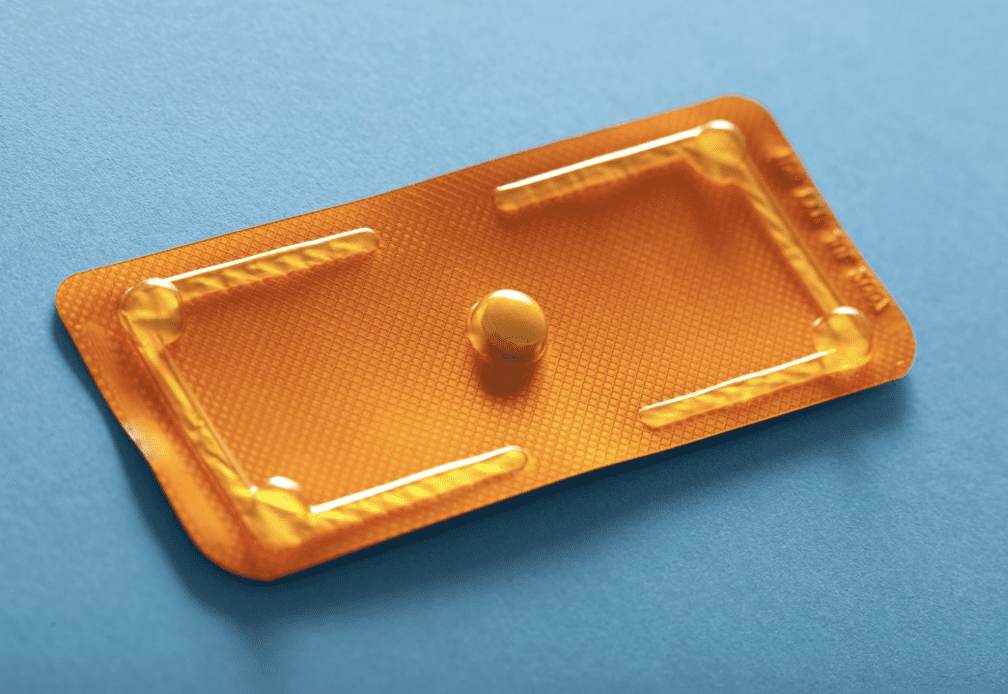
Morning After Pill (Plan B Emergency Contraception)
Commonly known as “emergency contraception,” the morning after pill is a high dose of the birth control pill taken within seventy-two hours of intercourse, followed by a second dose twelve hours after the first. Sometimes it works as a contraceptive by delaying or stopping ovulation or by altering the transportation of the sperm or egg.[1]
However, in order for the morning-after pill to prevent ovulation, the drugs need to be absorbed through the intestines, pass into the blood stream, travel to the brain, and tell the pituitary gland not to trigger the hormonal reaction that causes ovulation. By the time this process is completed, the baby’s eye color, hair color, and entire genetic code could already be determined.
Although the pill can be taken three days after intercourse, fertilization can happen less than three hours after intercourse. But the drug is still able to work because it alters the lining of the uterus so that it can reject the implantation of the baby.[2] An early abortion takes place, without the woman’s knowledge that she was ever pregnant. However, the manner in which the drug works depends upon when it is taken, when the woman ovulates, and if pregnancy even occurs.
Unfortunately, women given the morning-after pill are not told of its abortifacient potential. In fact, advertisements for the pill proclaim that “if you take Plan B and are already pregnant, it will not affect your existing pregnancy.”[3] How can they get away with saying this? They redefine pregnancy as something that begins with the successful implantation of the baby, instead of with fertilization. Interestingly, even some drug companies that make contraceptives do not agree with this definition. For example, the information packet included with one form of birth control refers to the fallopian tubes as the place “where a pregnancy begins before it moves into the uterus.”[4]
With regard to its effectiveness, advertisements for the morning after pill claim that it is 89 percent effective. Studies cited by the FDA show numbers ranging from 55 to 94 percent.[5]. Meanwhile, the Plan B patient package insert claims that the drug reduces the risk of pregnancy by at least 75 percent. According to one of the drug companies that makes the morning-after pill, a woman has an 8 percent risk of getting pregnant through a single act of intercourse. But if she takes their emergency contraceptive, she only has a 1 percent risk.[6] (They add that the drug is more effective if is taken as soon as possible after intercourse.) Interestingly, these statistics mean that 92 percent of the women who use the morning-after pill would not have gotten pregnant anyway. Most women who take emergency contraception will never know if they would have gotten pregnant or if they terminated the life of their newly conceived child.
For years the proponents of “emergency contraception” claimed that it would reduce the number of unwanted pregnancies and surgical abortions. However, according to a review of twenty-three studies published in a 2007 issue of the journal Obstetrics and Gynecology, “to date, no study has shown that increased access to this method reduces unintended pregnancy or abortion rates.”[7]
According to the prescribing information of the morning-after pill, side effects of the drug may include nausea, abdominal pain, headache, fatigue, dizziness, change in menstrual bleeding, vomiting, ectopic pregnancy, and more.[8]
____________________________
[1]. Plan B Prescribing Information, Duramed Pharmaceuticals, Inc. (August 2006), 1. [2]. Physicians’ Desk Reference (Montvale, N.J.: Thomson, 2006), 1068; Chris Kahlenborn, et al., “Postfertilization Effect of Hormonal Emergency Contraception,” The Annals of Pharmacotherapy 36 (March 2002), 465–470; Department of Health and Human Services, Federal Register Notice 62:37 (February 25, 1997), 8611.
[3]. “How Plan B Works,” Duramed Pharmaceuticals, Inc. (2007).
[4]. Essure Patient Information Booklet, Conceptus, Inc. (2003), 6.
[5]. Department of Health and Human Services, Federal Register, 8611.
[6]. Plan B Prescribing Information, 3.
[7]. Elizabeth Raymond, et al., “Population Effect of Increased Access to Emergency Contraceptive Pills: A Systematic Review,” Obstetrics and Gynecology 109:1 (January 2007), 181–188.
[8]. Plan B Prescribing Information, 6–7.